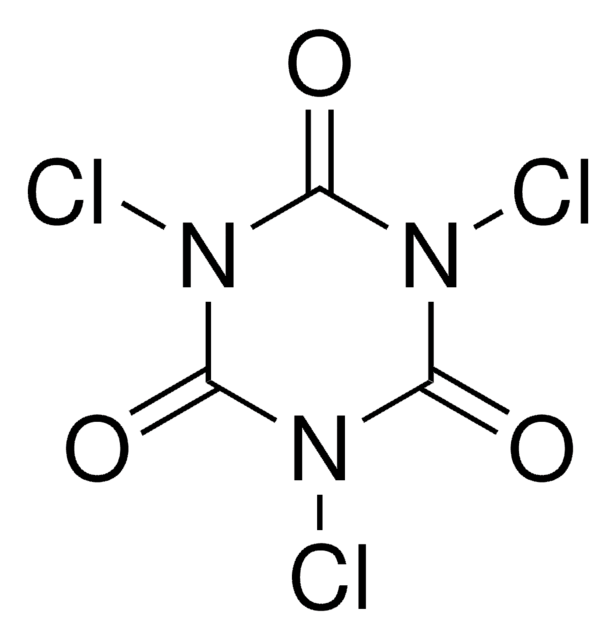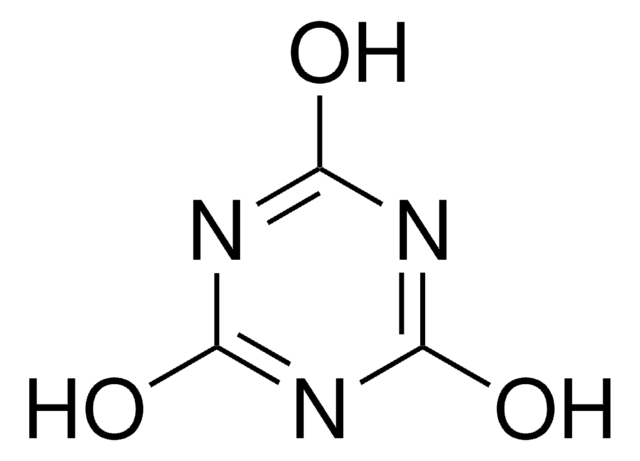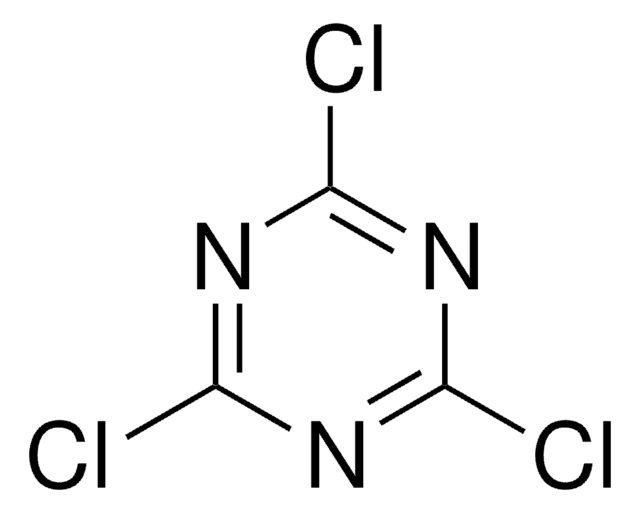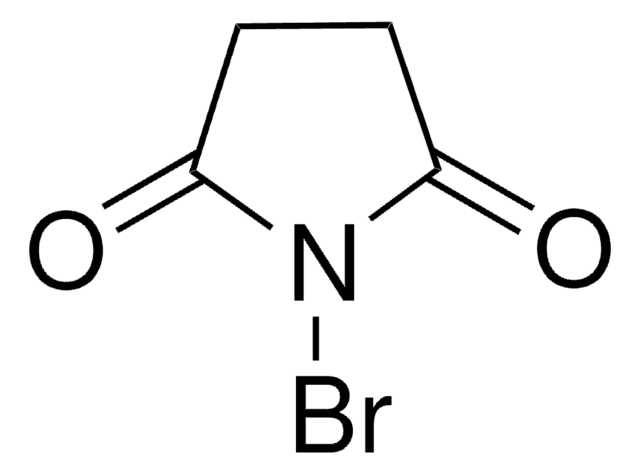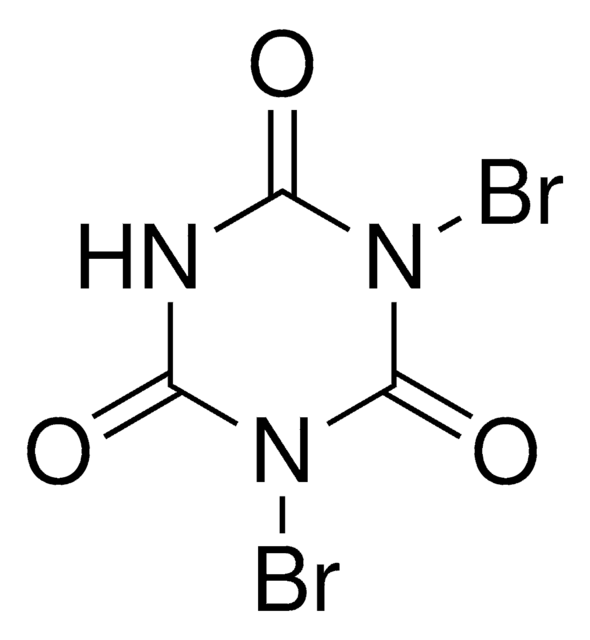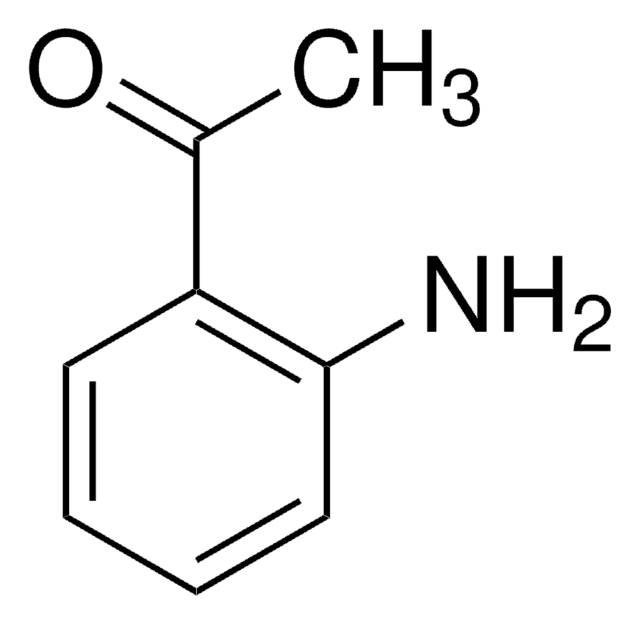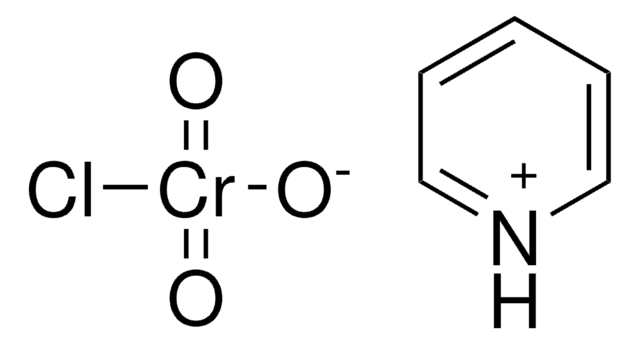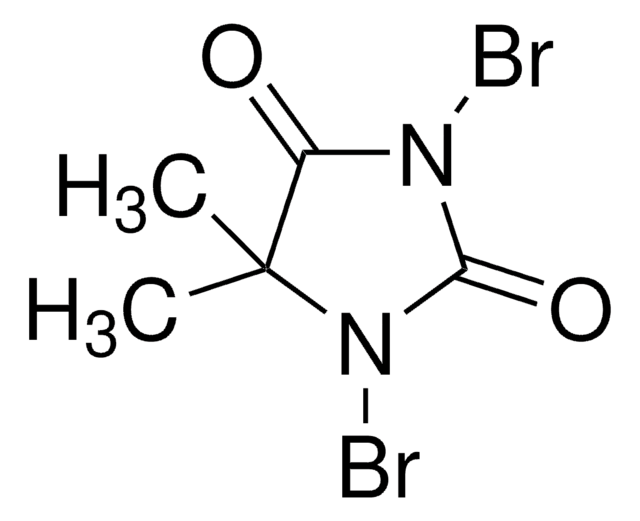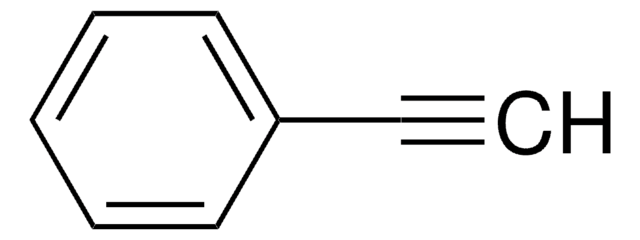8.08607
Trichloroisocyanuric acid
for synthesis
Synonyme(s) :
Trichloroisocyanuric acid, 1,3,5-Trichlorohexahydro-1,3,5-triazine-2,4,6-trione, 1,3,5-Trichloro-1,3,5-triazine-2,4,6-trione, TCCA, Bleaching solution
About This Item
Produits recommandés
Niveau de qualité
Forme
crystals
Puissance
406 mg/kg LD50, oral (Rat)
>2000 mg/kg LD50, skin (Rabbit)
pH
2.0-2.7 (20 °C, 10 g/L in H2O)
Pf
225-230 °C (decomposition)
Température de transition
flash point >250 °C
Densité
2.07 g/cm3
Masse volumique apparente
850 kg/m3
Température de stockage
2-30°C
InChI
1S/C3Cl3N3O3/c4-7-1(10)8(5)3(12)9(6)2(7)11
Clé InChI
YRIZYWQGELRKNT-UHFFFAOYSA-N
Application
- Catalyst- and metal-free C(sp2)–H bond selenylation of (N-hetero)-arenes using diselenides and trichloroisocyanuric acid at room temperature: An eco-friendly approach for the C(sp2)–H bond selenylation of imidazopyridines and other N-heteroarenes as well as simple arenes at ambient temperatures (JSS Neto et al., 2023).
- Organic impurity profiling of 3, 4-methylenedioxyamphetamine (MDA) synthesised from helional: This paper explores the use of trichloroisocyanuric acid in the oxidative rearrangement reaction for synthesizing MDA, presenting an alternative oxidizing agent approach (AL Mercieca et al., 2023).
- Convenient synthesis of 2-chloro-3-substituted quinoxalines by visible-light-induced radical cascade cyclization of ortho-diisocyanoarenes with sulfinic acids: This research discusses the use of trichloroisocyanuric acid as a Cl-source in visible-light-induced reactions, enhancing the synthesis process (P Natarajan et al., 2024).
- Synergy between UV light and trichloroisocyanuric acid on methylisothiazolinone degradation: The study presents an advanced oxidation process using ultraviolet and trichloroisocyanuric acid for the degradation of MIT, detailing performance, kinetics, and pathways (Z Chai et al., 2023).
Remarque sur l'analyse
Identity (IR): passes test
Mention d'avertissement
Danger
Mentions de danger
Conseils de prudence
Classification des risques
Acute Tox. 4 Oral - Aquatic Acute 1 - Aquatic Chronic 1 - Eye Irrit. 2 - Ox. Sol. 2 - STOT SE 3
Organes cibles
Respiratory system
Risques supp
Code de la classe de stockage
5.1B - Oxidizing hazardous materials
Classe de danger pour l'eau (WGK)
WGK 2
Certificats d'analyse (COA)
Recherchez un Certificats d'analyse (COA) en saisissant le numéro de lot du produit. Les numéros de lot figurent sur l'étiquette du produit après les mots "Lot" ou "Batch".
Déjà en possession de ce produit ?
Retrouvez la documentation relative aux produits que vous avez récemment achetés dans la Bibliothèque de documents.
Les clients ont également consulté
Notre équipe de scientifiques dispose d'une expérience dans tous les secteurs de la recherche, notamment en sciences de la vie, science des matériaux, synthèse chimique, chromatographie, analyse et dans de nombreux autres domaines..
Contacter notre Service technique